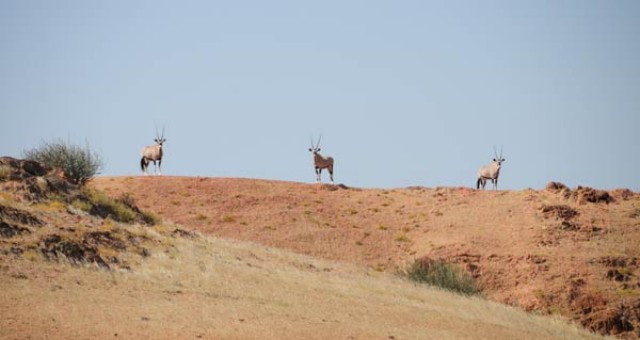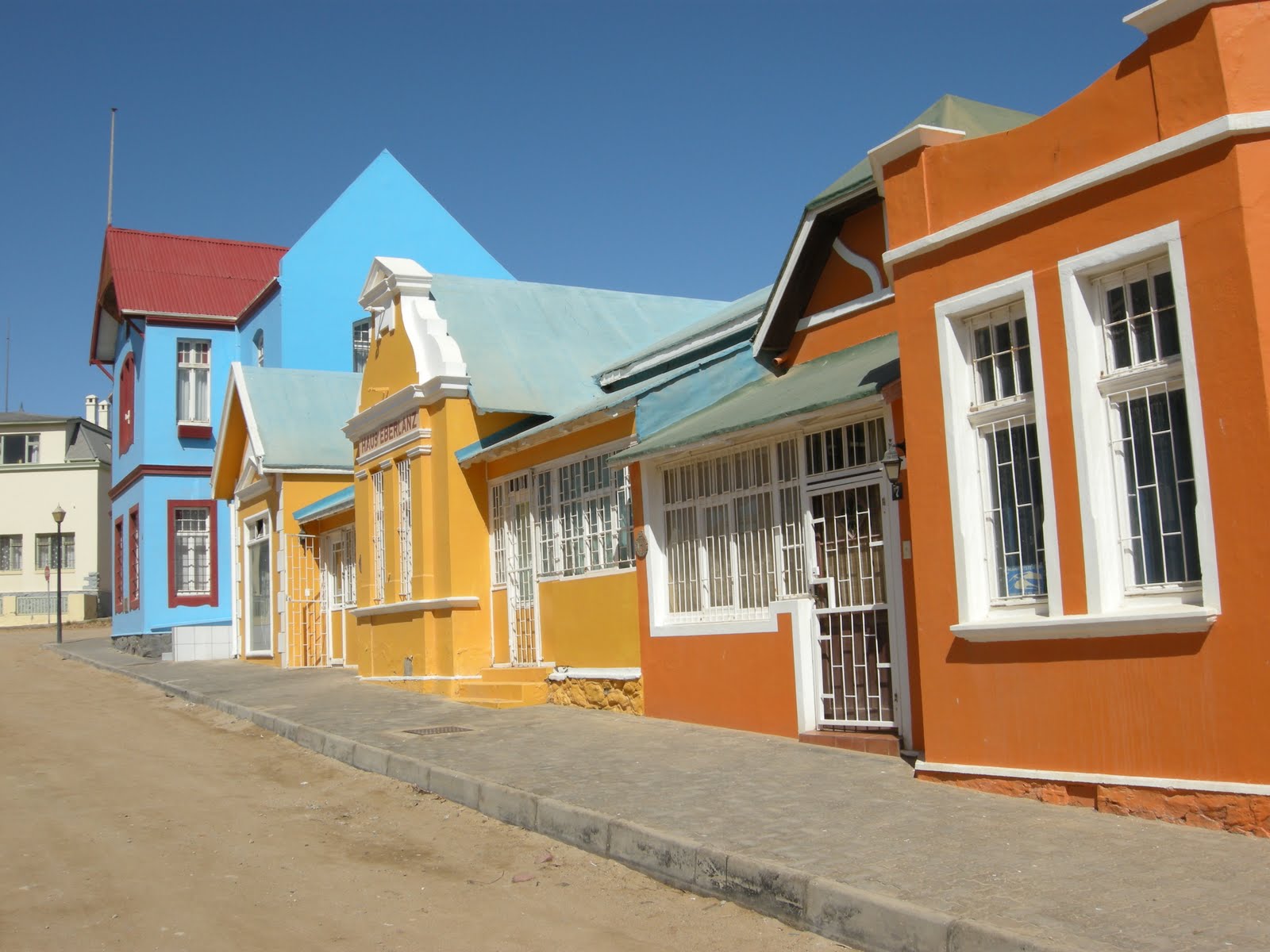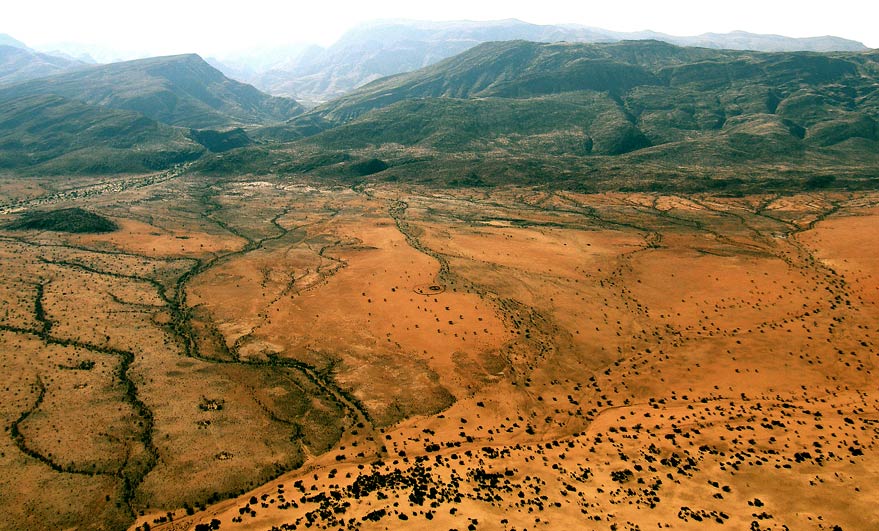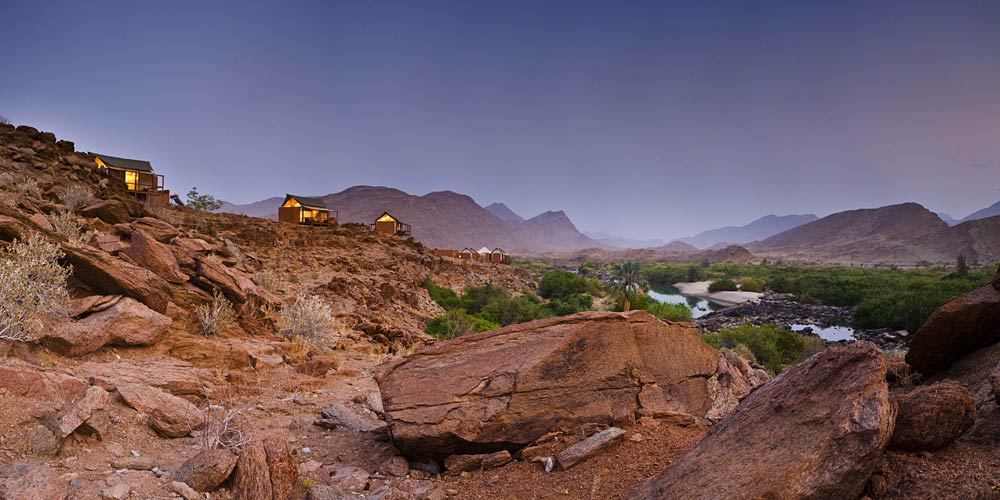Quick Facts: Namibia
- Namibia is officially known as the Republic of Namibia
- Namibia is over 820 000 square kilometers in size
- Namibia measures 1320 kilometers in length from north to south and 400 kilometers to 1000 kilometers in width excluding the Caprivi Strip from west to east
- The Caprivi Strip forms a long, narrow stretch of land reaching eastward to the Zambezi River
- The common border of Zimbabwe and Botswana is the shortest of the world's international frontiers, which is only 45 meters
- Walvis Bay was annexed to the British Crown in 1878 and in 1884 it became an integral part of the Cape Colony
- Namibia has a population of about 2.1 million people
- It is governed by a stable multiparty parliamentary democracy
- agriculture, herding, tourism and mining of precious stones and metals form the backbone of Namibia's economy
- Namibia is the second least densely populated country in the world, after Mongolia
Introducing Namibia
Namibia is a vast and mostly desolate territory that spreads over the southwesters regions of the southern African subcontinent. Bisected by the Tropic of Caprivorn, Namibia is bordered in the west by the 1 500 kilometer Atlantic coastline, in the north by the Kunene and Okavango rivers beyond which are the republics of Angola and Zambia, in the east by Botswana and in the southeast and south by the republic of South Africa.
Included within Namibia's straight boundaries is the Caprivi Strip. The Caprivi Strip forms a long, narrow stretch of land reaching eastward to the Zambezi River from Namibia's northeaster region. Zambia, Zimbabwe and Botswana come together at the small town of Kazungula and the common border of Zimbabwe and Botswana is the shortest of the world's international frontiers, which is only 45 meters.
Walvis Bay, which provides a well protected anchorage on a coast not noted for its natural harbours, was annexed to the British Crown in 1878 and in 1884 it became an integral part of the Cape Colony. After lengthy negotiations, Walvis Bay was finally returned to Namibia by South Africa in 1994. It formed a strategic and economically valuable enclave of 1 124 square meters in extent, lying roughly midway between the Gariep / Orange and Kunene rivers.
Namibia is over 820 000 square kilometers in size, it measures 1320 kilometers in length from north to south and 400 kilometers to 1000 kilometers in width excluding the Caprivi Strip from west to east. Namibia is sparsely populated; the total of its culturally diverse peoples stands at just 1.5 million some 150000 of whom live in and around Namibia's capital Windhoek.
Namibia has a population of about 2.1 million people and is governed by a stable multiparty parliamentary democracy. Agriculture, herding, tourism and mining of precious stones and metals form the backbone of Namibia's economy. Namibia is the second least densely populated country in the world, after Mongolia. Approximately half the population live below the international poverty line, and the nation has suffered heavily from the effects of HIV/AIDS, with 15% of the adult population infected with HIV in 2007.
Climate in Namibia
The rains fall during the summer months which is from November to February in all areas except the extreme southwest which sometimes enjoys a few, rather insignificant winter shower and remarkably the very occasional snowfall. Mean annual precipitation is about 250 millimeters through the arid Lower Orange and Namib regions enjoy less then 100 millimeters a year and frequently a lot less. The dune of the Namian desert are subject to abrupt periods o =d heavy downpours and sudden flood, but these are few and far between in terms of both rime and space and some areas received no rain at all for years.
The central and northern parts of Namibia receive about 660 millimeters of rain during a good year. In general, Namibia's rainfalls are extremely unreliable. Some of the drier parts of Namibia receive their annual average rainfall during a single cloudburst and sometime they get rather more. The climate in the desert coastal belt of Namibia is largely determined by interaction between the upwelling of the cold Benguela Current offshore and the South Atlantic high pressure system, and the mean annual temperature along the often chilly and fogbound western seaboard hovers around a modest 16 degree Celsius. Inland, across the central highlands, the temperature ranges between 19 - 22 degree Celsius.





.jpg)
.jpg)





.jpg)
.jpg)
